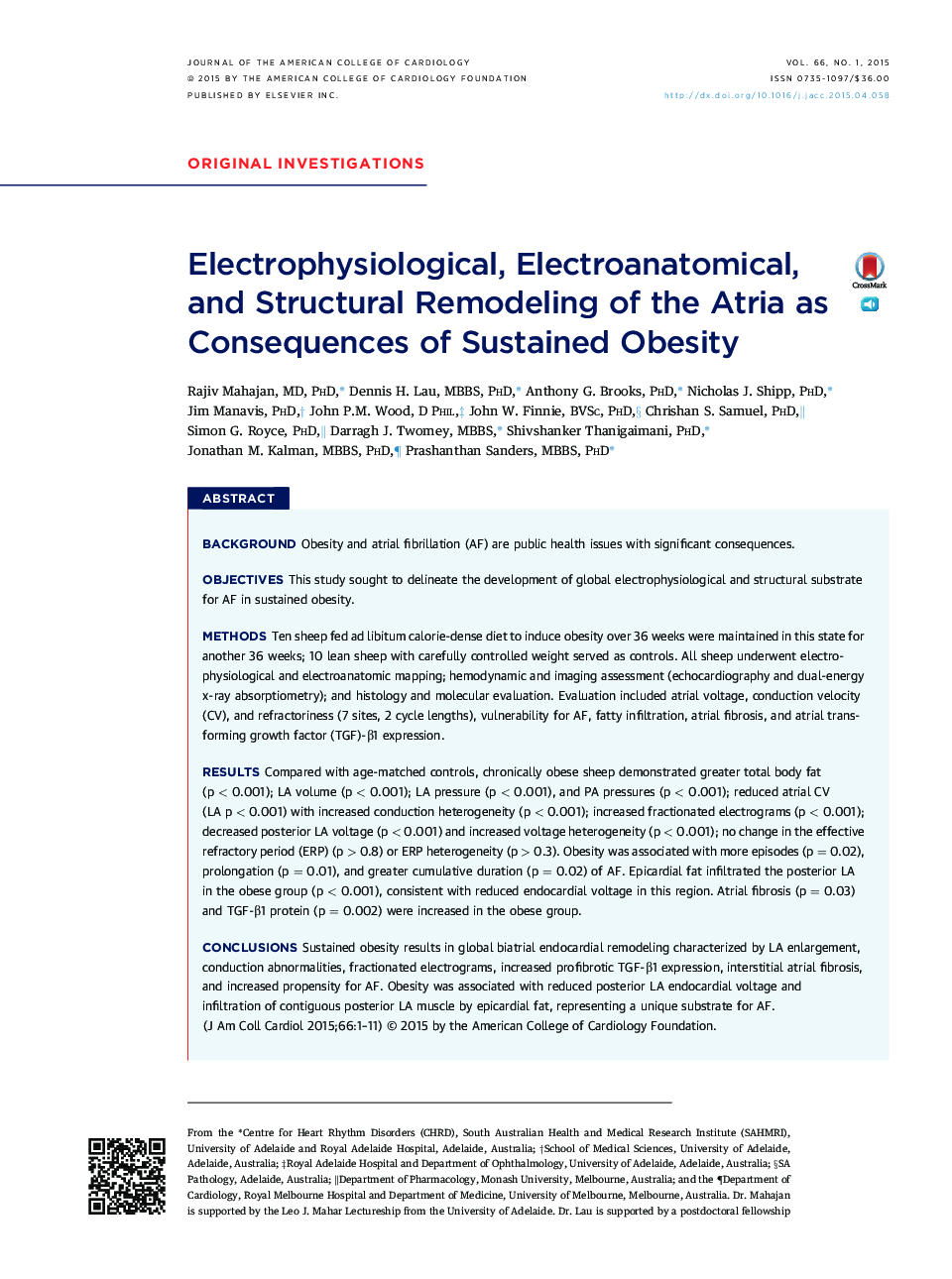| کد مقاله | کد نشریه | سال انتشار | مقاله انگلیسی | نسخه تمام متن |
|---|---|---|---|---|
| 2943774 | 1577041 | 2015 | 11 صفحه PDF | دانلود رایگان |
BackgroundObesity and atrial fibrillation (AF) are public health issues with significant consequences.ObjectivesThis study sought to delineate the development of global electrophysiological and structural substrate for AF in sustained obesity.MethodsTen sheep fed ad libitum calorie-dense diet to induce obesity over 36 weeks were maintained in this state for another 36 weeks; 10 lean sheep with carefully controlled weight served as controls. All sheep underwent electrophysiological and electroanatomic mapping; hemodynamic and imaging assessment (echocardiography and dual-energy x-ray absorptiometry); and histology and molecular evaluation. Evaluation included atrial voltage, conduction velocity (CV), and refractoriness (7 sites, 2 cycle lengths), vulnerability for AF, fatty infiltration, atrial fibrosis, and atrial transforming growth factor (TGF)-β1 expression.ResultsCompared with age-matched controls, chronically obese sheep demonstrated greater total body fat (p < 0.001); LA volume (p < 0.001); LA pressure (p < 0.001), and PA pressures (p < 0.001); reduced atrial CV (LA p < 0.001) with increased conduction heterogeneity (p < 0.001); increased fractionated electrograms (p < 0.001); decreased posterior LA voltage (p < 0.001) and increased voltage heterogeneity (p < 0.001); no change in the effective refractory period (ERP) (p > 0.8) or ERP heterogeneity (p > 0.3). Obesity was associated with more episodes (p = 0.02), prolongation (p = 0.01), and greater cumulative duration (p = 0.02) of AF. Epicardial fat infiltrated the posterior LA in the obese group (p < 0.001), consistent with reduced endocardial voltage in this region. Atrial fibrosis (p = 0.03) and TGF-β1 protein (p = 0.002) were increased in the obese group.ConclusionsSustained obesity results in global biatrial endocardial remodeling characterized by LA enlargement, conduction abnormalities, fractionated electrograms, increased profibrotic TGF-β1 expression, interstitial atrial fibrosis, and increased propensity for AF. Obesity was associated with reduced posterior LA endocardial voltage and infiltration of contiguous posterior LA muscle by epicardial fat, representing a unique substrate for AF.
Journal: Journal of the American College of Cardiology - Volume 66, Issue 1, 7 July 2015, Pages 1–11
